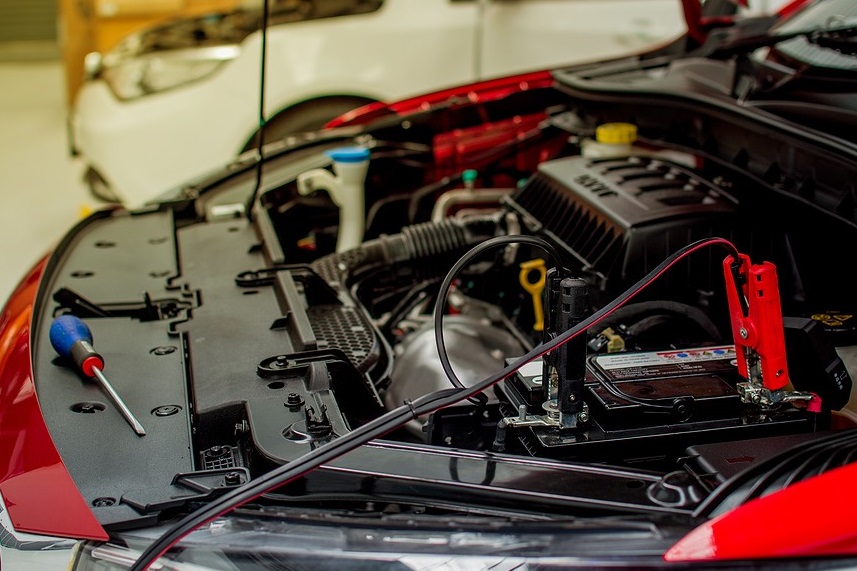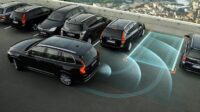Get to know electric car batteries, types and how to care for them
ebanmella – Unlike conventional cars that use gasoline as transportation, electric cars get power from the battery to move. Want to know about all electric car batteries? Come on, check out the summary of the information ebanmella has to offer in this article!
Read More: Hyundai Electric Cars: Types, Specifications and Prices
A look at electric car batteries
In electric cars, the battery is an important part. In fact, EV batteries are the only source of life, because the electricity in the battery is the only source of energy that drives the car. Regarding the type of battery, it usually depends on the type of car. Before moving on to the next discussion, check out related topics on Qoala, such as how electric cars work!
Types of electric car batteries
Speaking of EV batteries, you’re probably curious about the different types of batteries available. If so, here’s the info:
1. Lithium-Ion (Li-Ion)
Lithium-ion is the most popular EV battery type as it is widely used. So, don’t be surprised if you don’t know this kind of battery anymore. The reason is that this type of battery is widely used in various electronic devices such as laptops and smartphones. However, the physical capacity and size of electric cars is more than that of electronic devices.
This type of battery has a very high power to weight ratio. In addition, the efficiency of the battery is very high. Even in high temperatures, battery performance remains good.
Some of the advantages of this type of EV battery are that it charges quickly, lasts a long time, and has a high energy density. The low battery weight allows vehicles to travel long distances even on a single battery charge. Above all, this type of battery does not contain substances or substances that are harmful to humans.
2. Nickel-metal hydride (NiMH)
There are also electric cars equipped with nickel-metal hydride (NiMH) batteries, which of course have different energy storage materials than the original battery type, Li-ion. Hydrogen functions as a place to store energy and nickel and other metals to protect the hydrogen ion cap.
This type of battery is widely used in hybrid electric cars that do not receive power from an external source. This means that the car only gets power from an internal source or battery. Battery charging depends on the engine, wheels and regenerative braking speed of the car.
Apart from durability, long feed life is the advantage of this EV battery. In fact, this type of battery can be easily recycled with less toxic content for the environment. Unfortunately, they are relatively expensive with high self-discharge rates. The heat generated is also very important.
3. Lead acid
Although Li-ion is the most popular, lead-acid is the oldest type of battery. This means that this type of battery has been around the world for a long time. It does not have a capacity that can be compared to other types of batteries and is classified by weight. However, since it is affordable, the user will not break the wallet if he has to replace the old battery with a new one.
Compared to the previous two types of batteries, lead-acid is safer. In general, the use of this battery is widely used in commercial or commercial vehicles to store secondary energy. But larger capacity batteries are being developed to be suitable for electric cars and their applications.
4. Solid-state
If you look at the overall structure, this type of solid-state battery is similar to traditional Li-ion batteries. However, batteries can be denser and more compact without liquid. Power and charging are also not much different from traditional Li-ion.
Although it was recently used in the car industry, this type of battery has been around for a long time, especially in pacemakers, RFID and other devices. This battery is expected to have good potential for use in electric cars.
Compared to traditional liquids, the use of solid electrolyte in these batteries saves capacity with a small footprint. In fact, the capacity can reach 2 to 10 times that of solid-state batteries.
5. Nickel-cadmium
The next type of battery used in electric cars is nickel-cadmium with many advantages. As significant storage density. In addition, the battery life is about 500 to 1000 charging cycles.
However, the battery is very heavy and easily damaged by memory effects. That is, if the liquid is partially formed, the performance of the battery will decrease. Maybe many people don’t know that electric cars used this type of battery in the 90s. And today it is forbidden to use it because of the toxicity of cadmium.
6. Ultracapacitors
The polarized liquid in this car battery is between the electrodes and the electrolyte. As the surface area of the liquid increases, the energy storage capacity of the battery increases. Ultracapacitors are an ideal type of battery to provide extra power to electric vehicles during acceleration and regenerative braking. Oh yeah, before you go to the next explanation, check out other cool articles on the same topic, such as the Wooling Electric Car!
How to charge an electric car battery
While cars usually use fuel to run, this is different with electric cars. As the name suggests, this car needs electricity that can be obtained from the EV battery. However, batteries cannot always be used. This means you have to fill it up to make the car work again.
For those considering buying an electric car, of course the right way to charge the EV battery is an important consideration. It is good to know how to charge the battery to avoid unwanted effects or things.
Owning an electric car means you are responsible for making sure the vehicle is fully charged before you drive it. What do you think it looks like? In fact, there are several ways electric car users can do this:
1. Fast charging
Fast charging or fast charging is the fastest way to charge Indonesian EV batteries and similar vehicles made in other countries. Usually, it has a very large electric power or according to the needs of each car, from 20 kW to 150 kW. Special charging equipment is widely available at Public Electric Vehicle Charging Stations (SPKLU).
To charge from 0 percent to 80 percent, it generally takes 15 to 45 minutes. So, fast, right? So you can immediately use your favorite car to drive on the road.
2. Home filling
Do Tesla EV batteries need charging? In order to get the power to move the car, of course the driver needs to make sure that the car has enough battery power. For charging, you can charge at home or charge at home before driving.
The wall charger is connected to the AC electricity of the house electricity meter. However, home charging uses 6.6 to 7.4 kilowatts of electricity and requires around 7 hours to fully charge the battery. Therefore, the AC electric current from the charger is converted to DC current by the electric car’s inverter, which increases the processing time.
3. Regular filling
The next way to charge an EV battery is through regular charging. Charging at home isn’t much different, but it takes longer. However, this method of charging Wuling brand EV batteries or others can be done anywhere. The most important thing is that the charger, that is, the adapter, is connected to an electrical outlet that is widely available at home.
Unfortunately, this adapter does not have much power, at 3.3 kW. Therefore, battery charging is very long, ie up to 15 hours.
Read More: Recommendations for the Best Car Vacuum Cleaner, Complete
How to take care of electric car batteries
No matter what type of car you use, maintenance is very important. Moreover, electric cars require special maintenance to make the car last longer. As we all know, the battery is one of the components that needs to be properly cared for so that it lasts longer and suffers less damage. Here’s how to take care of an EV battery.
1. Protect battery capacity
One of the most important aspects of taking care of an EV battery is to ensure that the battery capacity is maintained. Make sure the battery capacity is low so the battery still performs well in providing electrical current.
It is always best to ensure that the battery is at least 40 to 60 percent charged. So there is no need to wait until 0 percent to charge the EV battery.
2. Set the incoming current voltage
Proper maintenance can make electric batteries last longer so you don’t have to worry about damage and replacing the battery before it reaches the end of its useful life. One way that can be done to maintain an EV battery is to regulate the incoming current voltage.
The easiest way that electric vehicle owners can do is set the battery power supply mode, especially when charging the battery. Try using home charging or quick charging mode depending on driving needs.
Battery charging mode can be used only once every two weeks. If the battery is empty, check again whether the meter panel or indicator is ready before use.
3. Determine the Right Time to Charge the Battery
Another important thing in caring for a Hyundai EV battery or any other type is determining the right time to charge the battery. To ensure that the auxiliary battery voltage does not drop easily, it is best to recharge the battery every day. But you don’t have to do it every day, just adjust it to your needs and condition or car battery percentage.
Maybe you can charge it no later than once every 2 days, especially for cars that are rarely used.








